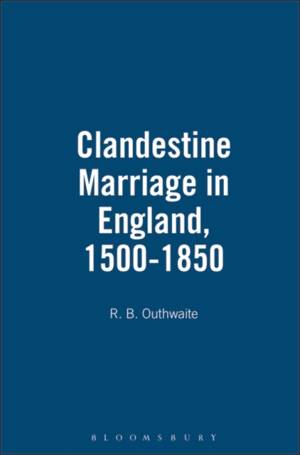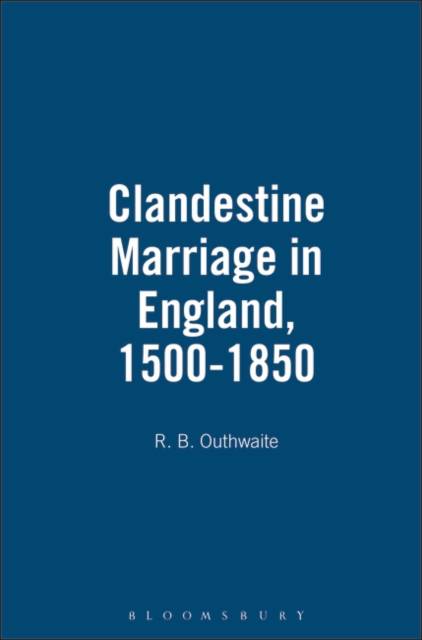
- Afhalen na 1 uur in een winkel met voorraad
- Gratis thuislevering in België vanaf € 30
- Ruim aanbod met 7 miljoen producten
- Afhalen na 1 uur in een winkel met voorraad
- Gratis thuislevering in België vanaf € 30
- Ruim aanbod met 7 miljoen producten
Zoeken
Omschrijving
While marriages were supposed to be celebrated publicly by priests, in churches where the parties were known, many couples had reasons -- among them parental disapproval, religious nonconformity, property considerations and previous entanglements -- to marry in other ways. Nor was this difficult where there was no unified marriage code, where a simple exchange of vows might constitute a valid marriage, and where unbeneficed priests were prepared to perform the ceremony in return for a drink.
Clandestine marriage had represented a problem to the church and state, and to the rights of property, since the middle ages, eluding a variety of attempts to control it. By the eighteenth century it had become a scandal, with Fleet parsons marrying thousands of couples a year. In 1753 Lord Hardwicke's Marriage Act nullified such irregular marriages, only to drive them to adopt other guises until the introduction of civil marriage in 1836. In this intriguing book Brian Outhwaite explores the nature and scale of clandestine marriage. He describes why it attracted so many customers and why it was so hard to suppress. Clandestine Marriage in England, 1500-1850 provides a new perspective on a central social and religious institution.Specificaties
Betrokkenen
- Auteur(s):
- Uitgeverij:
Inhoud
- Aantal bladzijden:
- 224
- Taal:
- Engels
Eigenschappen
- Productcode (EAN):
- 9781852851309
- Verschijningsdatum:
- 1/11/2003
- Uitvoering:
- Hardcover
- Formaat:
- Genaaid
- Afmetingen:
- 155 mm x 236 mm
- Gewicht:
- 657 g

Alleen bij Standaard Boekhandel
+ 407 punten op je klantenkaart van Standaard Boekhandel
Beoordelingen
We publiceren alleen reviews die voldoen aan de voorwaarden voor reviews. Bekijk onze voorwaarden voor reviews.











